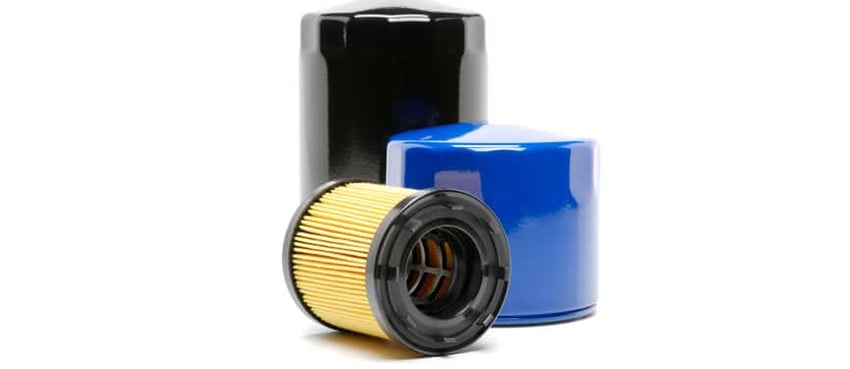When manufacturers supply products to customers, they want to have the highest confidence in the quality of those products. But, when proper measures aren't accessible or available to guarantee quality, a major need arises.
A recent customer, a manufacturer of automotive oil filters, had finally reached a critical point in their business as a result of problems with product quality, specifically regarding adhesion.
Adhesion failures in the field damage brand reputation and the user’s productivity, and in today’s lightning-fast social media blogosphere, word of these failures can quickly spread. After a year of product failures, the manufacturer decided upon a proactive approach and brought in Brighton Science
The Problem
The hydraulic filters, which comprised of nylon polymer caps and a mesh filter, were coming apart upon removal from the hydraulic system.
When the customer needed to change the filter, the cap would come apart from the rest of the piece due to poor adhesion. Leaving the rest of the filter stuck in the system caused more delays as it was difficult to remove and created a mess.
When looking into an adhesion issue, Brighton Science first asks the question: what is the in-place surface preparation process?
The Materials & Process
The manufacturer was using a 2-step process which included plasma treatment on their end caps followed by a heat cure.
Plasma treatment is a very effective way to treat a surface. However, there existed a potential for leaving contaminants on the surface because the technicians did not have a way to verify the amount of plasma to utilize. Thus, treatment levels varied.
The second step--heat cure process--has the ability to remove some of the contaminants left behind, and in theory, could make the adhesive more tolerant of contaminants, but this didn’t solve the problem as failures still ran rampant.
Rethink your adhesion manufacturing processes with Surface Intelligence.
The Root Cause
The problem came from the varying amount of plasma treatment levels. Because there was no consistency, no definitive process, and no way to verify the characteristics of the surface, no one knew the appropriate treatment level to ensure adhesion. Furthermore, the caps to these hydraulic filters came from several different suppliers, which created even more inconsistency.
Knowing the nature of these contaminants would be an initial step in modifying the process. All of these suppliers were asked to refrain from using a silicone-based mold release. Silicone, a highly hydrophobic substance, is a huge contaminant and will prevent a bond from properly adhering. Knowing that there existed no silicone mold release on the surface of these caps, experts from Brighton Science ran some analysis tests.
The Measurements & Solution
Engineers from Brighton Science used the Surface Analyst™ to measure the surface cleanliness of the caps.
They obtained two caps from each supplier: one treated and one untreated. When the drop of water contacted the surface of the cap, the drop reacted rather strangely. What Brighton Science saw was dynamic wetting: the behavior of a drop of water that lands on a hydrophilic surface and spreads out over time as it absorbs the substance. The testing revealed an inconsistent contact angle, which is not ideal.
Brighton Science then treated a different section of the cap with a solvent wipe, followed by another inspection using the Surface Analyst. The measurement remained the same.
This indicated that the surface held a contaminant that the solvent wipe was removing. Furthermore, because of the behavior of the water droplet, the contaminant was assumed to be of a hydrophilic nature. So, while the suppliers were adhering to the non-hydrophobic solution, they were using a hydrophilic soap.
This soap was leaving a residue on the caps.
Brighton Science went one step further and, using their fully equipped Materials & Process Laboratory, tested the caps with their XPS Mass Spectrometer, which supported this claim. There was, in fact, a hydrophilic substance on the surface of the caps. Furthermore, this substance showed high levels of potassium which is common in soap mold releases. When the specs were originally designated, the manufacturer only wanted to avoid hydrophobic mold releases. However, these tests prove that the hydrophilic mold release also caused contamination on the cap. And depending on the level of plasma, the soap remained on the surface as a contaminant even after treatment. This meant the specs for suppliers would have to change.
Revolutionize Your Manufacturing with Surface Quality Inspection Technology.
The Results
Using the Surface Analyst, the company was able to discover the presence of an unwanted substance on the surface of some of its incoming products.
The next step would be to reevaluate their assembly process. New specs would need to be in place, a determination of proper surface cleanliness must be decided, and a new surface treatment process must be constructed.
This included a requirement for the supplier to wipe the part with a solvent prior to shipping. Then, the manufacturer would also use a solvent wipe before plasma treatment. This ensured that the soap did not remain a contaminant on the surface. Consequently, all of the parts could now confidently arrive from suppliers. The technicians could then clean and treat to a specification number to pass on to customers for successful implementation.
Learn how you can bring reliability to your manufacturing processes by reading the eBook "Predictable Adhesion in Manufacturing Through Process Verification."


